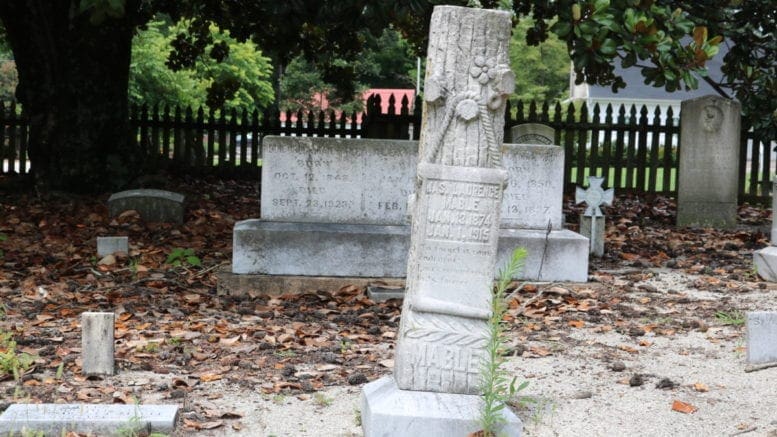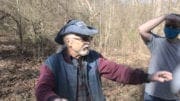[This is another article originally published in the first few years of the Cobb County Courier when our visitor count was only around 10,000 per 30-day period. We’ve decided to rework the articles for our current larger audience of over 100,000]
The Mable family cemetery would probably be among the dozens of old, small, family cemeteries barely noticed from the roadways, except for an accident of history. In 1881 Robert Mable turned over a portion of his property for use by the railroad, and the small town that developed around the railroad stop was for that reason called Mableton.
The Mable family
According to the interpretive signage at the Mable House, Robert Mable was born in 1803 in Scotland and brought his family to the U.S. in 1820. He first arrived in New York, and moved to Savannah, then Hancock County before purchasing 300 acres of land in the present location of Mableton.
By 1860 his total land holdings had grown to 600 acres, and in addition to farming, Mable operated a sawmill.
The Mable family cemetery
The first known burial at the Mable family cemetery was Robert Mable’s wife Pheriby, who died in childbirth with her seventh child in 1851. Robert Mable died in 1885, and his second wife, Almeda, was buried in the cemetery in 1912. The last burial in the cemetery was in 1958.
Slave Graves
At least eleven enslaved people worked and lived on the Mable property, and at least nine of them were buried in the cemetery. The graves in the slave section are marked only by rough stones with no inscriptions. Only three of their names are known with certainty, Celia, Thack, and Suck, although 15 others are listed by name on a marker provided by the South Cobb Arts Alliance, compiled from research, as possibly being buried there.
Location of the Cemetery
The cemetery is on the east side of Floyd Road about midway between the intersections with Fontaine and Nickajack roads, and adjacent to the Mable House arts complex.
It is still a privately owned family cemetery, so the gate on the wooden picket fence is locked. But the cemetery is so small that it’s easy to see every marker from outside the fence.





















